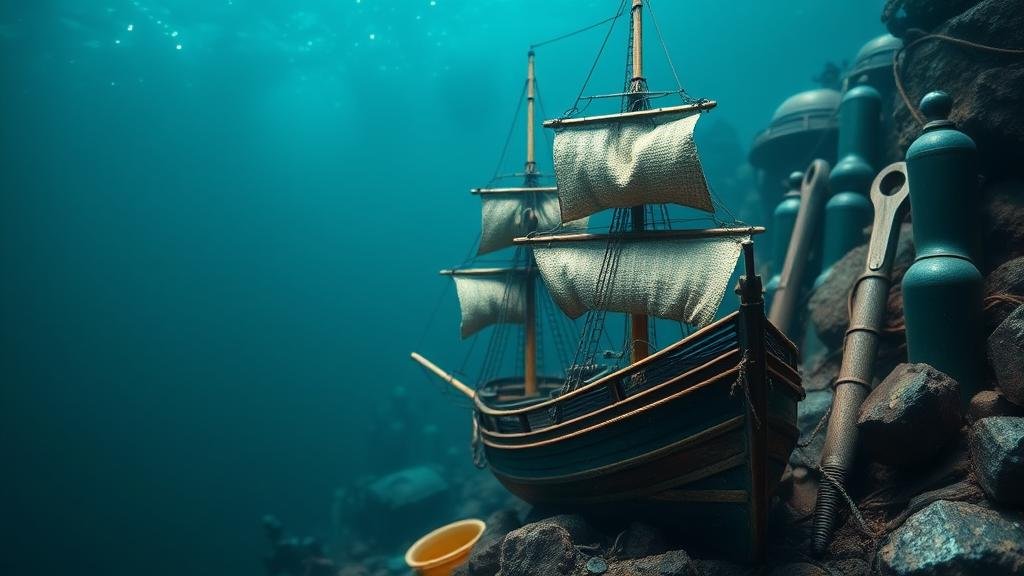Detecting Near Historical Shipbuilding Sites for Nautical Tools and Relics
Detecting Near Historical Shipbuilding Sites for Nautical Tools and Relics
The study of historical shipbuilding sites holds immense value in understanding maritime culture, technology, and commerce. As researchers and archaeologists seek to uncover shipbuilding sites, their focus often extends to the tools and relics associated with these locations. This article explores the methodologies employed to detect and analyze near historical shipbuilding sites, the significance of these findings, and the broader implications for maritime archaeology.
Understanding Historical Shipbuilding Practices
Historically, shipbuilding was a craft that required not only skill but also a deep understanding of materials, hydrodynamics, and regional marine conditions. Different cultures approached shipbuilding with distinct methodologies and materials, influenced by their environments. For example, Viking longships, known for their speed and agility, were constructed primarily using oak, while Mediterranean vessels often utilized lighter woods such as pine.
As shipbuilding practices evolved, so did the associated tools and techniques. Tools such as adzes, chisels, and clamps were crucial in transforming raw materials into seaworthy crafts. Recognizing the significance of these tools helps archaeologists identify historical sites and understand the technological advancements of the era.
Methodologies for Detecting Historical Shipbuilding Sites
To effectively detect near historical shipbuilding sites, archaeologists employ a combination of traditional methods and advanced technologies. The following methodologies are particularly significant:
- Geophysical Surveys: Techniques such as ground-penetrating radar (GPR) and magnetometry are utilized to map subsurface features without extensive excavation. These methods can reveal anomalies indicative of human activity, such as shipbuilding.
- Site Surveys and Excavations: Archaeologists conduct field surveys to locate potential sites. This often includes testing specific areas through controlled excavations, enabling the recovery of artifacts.
- Remote Sensing: Aerial photography and satellite imagery assist in identifying site locations that might be obscured by vegetation or man-made structures.
For example, the use of GPR at the historic shipyard site of Bath, North Carolina, successfully identified buried structures linked to colonial-era shipbuilding, leading to substantive excavations and the recovery of relevant artifacts.
Tools and Relics: What They Reveal
The tools and relics uncovered at historical shipbuilding sites serve as tangible connections to the past. Each artifact carries a story, contributing to our understanding of maritime practices. Key findings may include:
- Shipbuilding Tools: Items such as planers and calipers provide insights into the construction techniques and precision utilized.
- Shipwreck Remains: Remnants of ships themselves can reveal technological adaptations over time, including changes in hull design, rigging, and navigation systems.
- Everyday Artifacts: Objects like pottery shards and metal fasteners give context to the daily lives of shipbuilders and their communities, enriching the narrative of maritime history.
As an illustration, the discovery of ship components during excavations in the Chesapeake Bay area unearthed relics from the 18th century that provided insight into the regions shipbuilding evolution and trade routes.
Case Studies of Successful Shipbuilding Site Discoveries
Several excavations have dramatically advanced our knowledge of historical shipbuilding practices, demonstrating the effectiveness of various detection methodologies:
The Maya Shipyard Discovery
A site discovered in the Yucatan Peninsula revealed the remnants of a Maya shipyard, providing evidence that the ancient civilization engaged in maritime transport far earlier than previously believed. use of magnetometry allowed archaeologists to pinpoint areas of interest, leading to significant excavations.
The Wreck of the Batavia
The recovery of the Batavia, a Dutch East India Company ship wrecked in 1629 off the coast of Australia, has provided unparalleled insights into shipbuilding and maritime trade of the time. Tools and cargo recovered from the site offer a wealth of information about the economic practices and ship construction methods of the era.
Challenges in Site Detection
Detecting historical shipbuilding sites is not without challenges. Issues such as changes in the landscape, urban development, and environmental factors can obscure these sites. Also, limitations in technology and funding can restrict the scope of archaeological investigations. To address potential concerns, archaeological teams often implement multidisciplinary approaches, combining expertise from history, geology, and marine studies.
Conclusion and Future Implications
Detecting and analyzing near historical shipbuilding sites for nautical tools and relics is essential for understanding the complexities of maritime history. The methodologies employed, the artifacts recovered, and the case studies discussed highlight the importance of preserving maritime heritage.
As we continue to explore these sites with refined methodologies and technology, the potential for new discoveries is significant. Archaeologists and historians must also advocate for the protection of these locations, ensuring their value for future generations remains intact. Collaborative efforts among researchers, local communities, and policymakers are crucial to safeguarding these invaluable historical resources.



